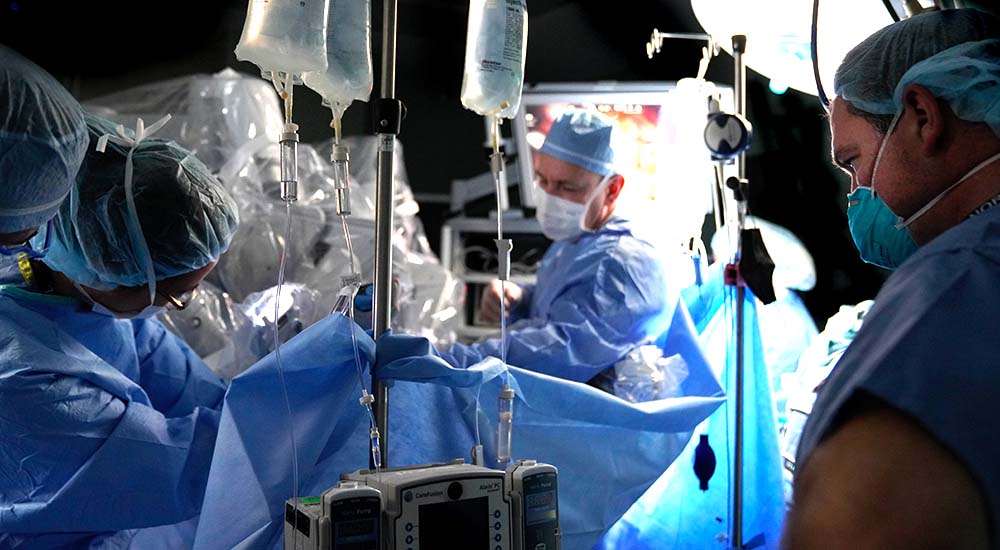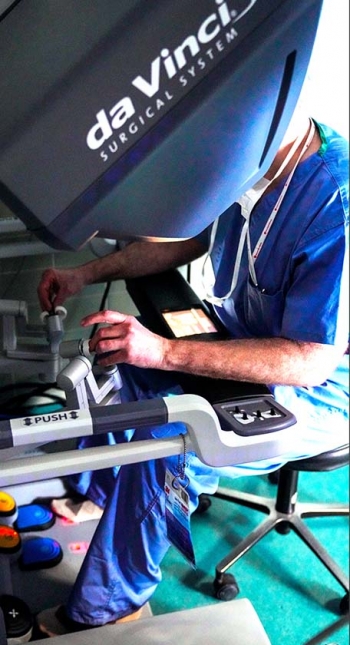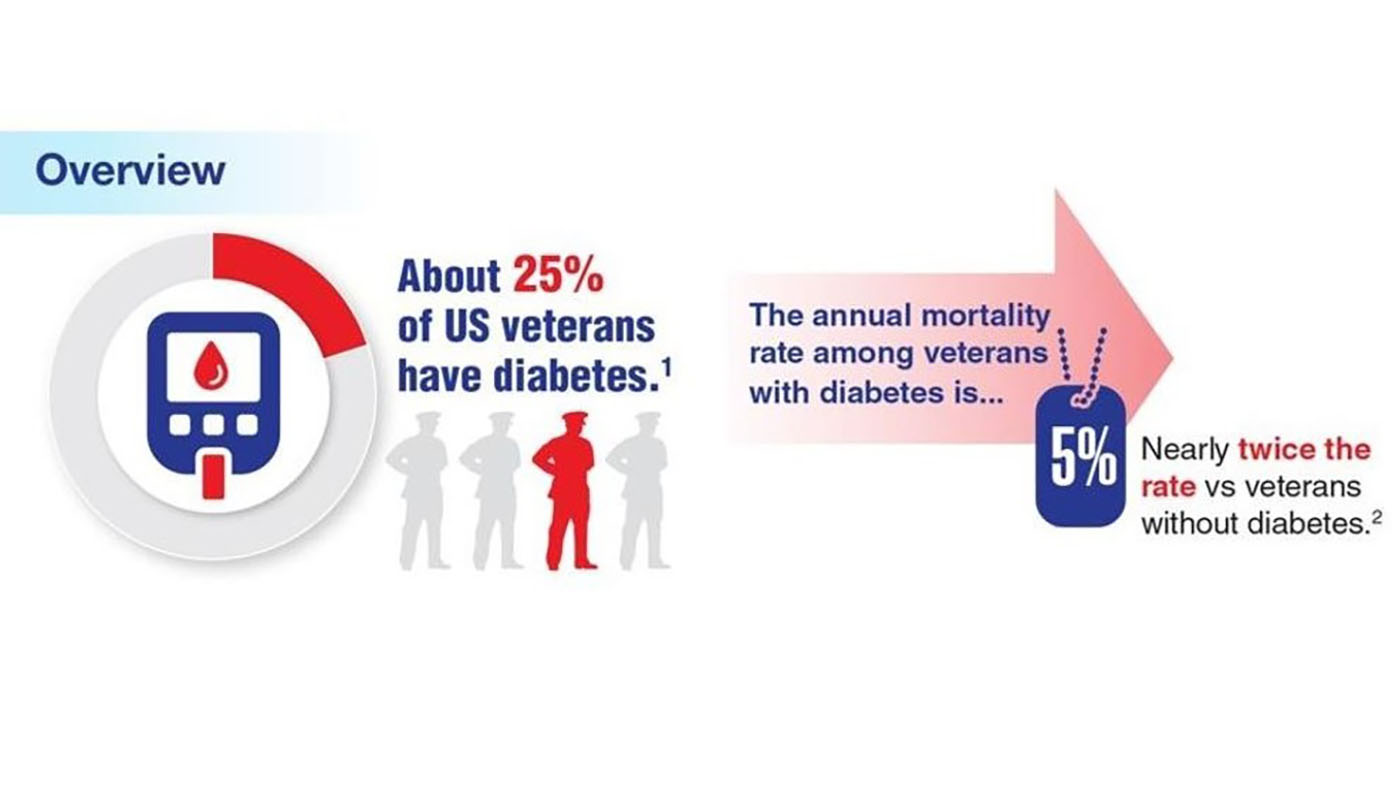The da Vinci robotic surgical system was used for the first time Feb. 25 for a urological procedure on a Veteran’s prostate.
Northport VA staff were eager to use the high-tech machine that will help them perform a variety of surgical procedures.
Robotic-assisted surgery differs from conventional keyhole surgery, known as laparoscopy, as surgeons operate on patients using one or several robotic arms directed from a control panel.
Minimal scarring – faster recovery
“The amazing thing is that you see things ten times better. Everything is magnified with this system compared to looking with your naked eye,” said urologist Dr. John Fitzgerald. “You can see things you’ve never seen before. And patients wake up after life-saving surgery with minimal scarring and faster recovery times. Patients are often discharged and return home within days if not the same day.”
Surgeons using the da Vinci system sit at a nearby console and control a set of robotic arms that contain the surgical instruments. The arms use sensors to simulate touch and motion while a camera arm shows everything in 3D for the surgeon.
“The robot is like an extension of my hands,” Fitzgerald says.” It does not make any decisions on its own and will allow more surgeries to be done in a minimally invasive way. The robot really excels in small spaces in the human body and many of the spaces we need to get to are in tiny areas. One example is the prostate. It’s a small organ and is difficult to get to with our hands because our hands are so big. The robot’s hands are a lot smaller and they can fit into those tiny spaces. The robot provides much more functionality.”
Surgeons must complete formal credentialing
Robotic surgery has come a long way in the last 10 years and crosses almost all surgical subspecialties. It continues to evolve as surgeons become more and more comfortable with this technology.
The surgeons who use the robot must complete a formalized credentialing plan, which includes simulation training, hands-on cadaver lab training and case proctoring. Additionally, the surgeon must perform a number of cases over a two-year period to maintain their credentials.
Millions of surgeries worldwide have been performed utilizing the robotic-assisted surgical system. This robotic system is just one of the latest additions to the advanced tools and equipment our doctors and nurses have at their fingertips when providing outstanding inpatient and outpatient care to our nation’s Veterans.
Topics in this story
More Stories
Discover the power of your breath! Explore how mindful breathing can bring peace, ease your mind and enhance clarity in this week's #LiveWholeHealth video.
A unique program at Boston VA uses the principles of trauma-informed care to serve homeless Veterans with empathy and understanding.
Diabetes is a complex metabolic disorder with serious consequences if not managed properly. VA can help.








dear director of veteran resourses, we vets at reddings new facility would very much need A divinci robot surgical system and i know just the person that would jump to the chance to train for it. her name is cat, she’s young energetic i believe shes got the stuff, she would turn the tarnished rep. and make us proud to go to redding ca. veteran clinic. thank you sir, mam — conserned vet.